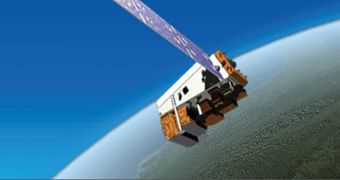Experts with the US National Oceanic and Atmospheric Administration (NOAA) announce the successful installation of the first ground antenna that will receive data from satellite constellation that will be launched to space soon enough.
The Joint Polar Satellite System (JPSS) program is the United States' next-generation polar-orbiting satellite system, which will replace existing spacecraft. The latter have already reached or exceeded the operating lifetime, and need to be retired.
But before the spacecraft can be sent to Earth orbit, the ground capabilities need to be in place to pick up the signals. This is precisely what NOAA did at the McMurdo Station, in Antarctica, where the first JPSS antenna is now operational.
It is the first JPSS Common Ground System component, officials from the organization explain. When compared to existing facilities, the new one is able of operating at 400 percent increased speed, while processing 500 percent more data than any other similar installation.
“Having more data available much faster will strengthen NOAA’s ability to monitor atmospheric triggers that eventually lead to a tornado outbreak, hurricane, snow storm, wildfire or flood, so we are all prepared before severe weather strikes,” explains Kathryn Sullivan, PhD.
The NOAA assistant secretary for environmental observation and protection says that NOAA has been operating polar-orbiting satellites for more than 40 years. This type of orbit is mostly used by weather and spy/surveillance satellite.
But the United States may soon lose its polar-orbiting weather satellite fleet, as soon as 2016 or 2017, NOAA experts say. If funds for the JPSS are not secured soon enough, then the country will experience a gap in its capabilities similar to the one it will endure in human spaceflight.
The NASA National Polar-orbiting Operational Environmental Satellite System Preparatory Project (NPP), which will launch on October 25, 2011, will end its life by 2017. The new constellation needs to be ready by then.
“If JPSS is not in place at the end of NPP’s life, there will be a significant decline in the accuracy of NOAA weather forecasts, including hurricane track prediction two days out. It’s absolutely critical that we have continuous polar satellite coverage,” Sullivan concludes.

 14 DAY TRIAL //
14 DAY TRIAL //